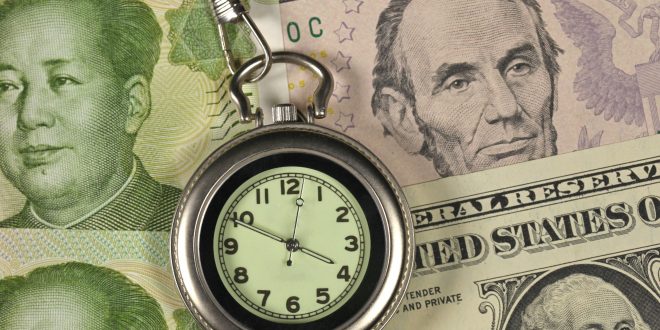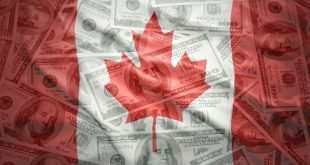The highlight of the week was the inauguration of Joe Biden as the 46th President of the United States. Biden is promising to better handle the Coronavirus crisis in the U.S. through a new plan for distributing vaccines, as well as increased stimulus to help businesses and households alike cope with the dire impact of the pandemic.
Meanwhile, former President Donald Trump is set to face trial in the Senate next week, as the House of Representatives is set to deliver the single article of impeachment accusing Trump of inciting insurrection.
Wall Street
Meanwhile, the New York Stock Exchange (NYSE) showed a mostly positive performance, with promises of increased government stimulus raising investors’ risk appetite, while concerns about the spread of the virus and its new variant erased some earlier gains after two of the three benchmark indices recorded new record highs following the Biden inauguration.
The Dow Jones Industrial Average ended the week up by 0.6%, while the S&P 500 and the Nasdaq Composite rose by 1.9% and 4.2%, respectively.
Oil
Following some losses on Friday, the global benchmark Brent crude futures reduced their weekly gains to 0.6%, while the U.S. benchmark West Texas Intermediate (WTI) futures registered a weekly loss of 0.3%.
The number of active rigs drilling for oil in the United States increased for the ninth consecutive week, adding another two to reach 289 by the end of last week. Meanwhile, the total rig count went up by five, with the addition of three natural gas rigs, to end the week at 378, as shown by the weekly report of Baker Hughes.
The weekly report of the U.S. Energy Information Administration (EIA) showed that crude inventories in the U.S. increased by 4.4 million barrels last week.
Gold
The yellow metal was supported throughout most of the week by the decline of the U.S. Dollar (USD). Accordingly, the yellow metal most active futures rose by 1.4% for the week, after declining for three consecutive weeks.
Many market experts expect more positive performance by gold futures on the medium-term, especially if the Biden administration succeeds in passing the $1.9 trillion rescue plan through Congress. The increased government stimulus spending, coupled with the monetary easing policies by the Federal Reserve, are expected to lead to the USD’s depreciation and the appreciation of gold prices.
Treasury Yields
U.S. Treasury yields mostly declined last week, on the back of mixed economic data. The benchmark 10-year Treasury bond yield decreased by 0.7 basis point on a weekly basis, while the return on the two-year notes fell by 1.4 basis points. On the other hand, the 30-year bond yield rose by 0.5%.
The highlight last week was the first monetary policy meeting this year for the European Central Bank, and as the markets had expected, the European Central Bank (ECB) decided to leave the interest rates on its main refinancing operations and the interest rates on the marginal lending facility and the deposit facility unchanged at 0.00%, 0.25% and -0.50%, respectively.
ECB Leaves Key interest Unchanged
ECB expects the key rates to remain at their present or lower levels until the inflation outlook robustly converges to a level sufficiently close to, but below, 2%.
ECB will continue the purchases under the pandemic emergency purchase program (PEPP) with a total envelope of € 1.85 trillion.
“The purchases under the PEPP will be conducted to preserve favorable financing conditions over the pandemic period.”
PMI
The most notable issues on the economic calendar this week were the UK, Germany and Eurozone PMIs.
The German manufacturing sector expanded less-than-expected in January, meanwhile, Services PMI contracted to 46.8 in January as against the previous month’s reading of 47.0 and 45.3 anticipated. The index hit a two-month low.
The IHS Markit Flash Germany Composite Output Index dropped to seven-month lows of 50.8 in January versus 50.3 expected and 52.0 previous.
The Eurozone manufacturing sector activity slowed a tad bit this month, although bettered the consensus forecast. The Eurozone Manufacturing managers index (PMI) improved from 55.2 in December to purchasing in January and beat 54.6 expectations while the Services PMI dropped to in January versus 45.0 expected and 46.4 last.
The IHS Markit Eurozone PMI Composite arrived at 47.5 in Jan vs. 47.9 expected and 49.1 previous.
The UK manufacturing and services sector activities deteriorated in January, the preliminary report from IHS Markit showed this Friday.
The seasonally adjusted IHS Markit / CIPS UK Manufacturing Purchasing Managers’ Index (PMI) hit a seven-month low of 52.9 in January versus 54.0 expected and 57.5 – December’s final reading.
Meanwhile, the Flash UK Services Business Activity Index for January contracted to an eight-month low of 38.8 versus December’s final readout of 49.4 and 45.0 expected.
Asia
According to the data issued, China’s industrial output rose at a faster than expected rate, reaching 7.3% in December compared to a year ago, to continue growth for the ninth consecutive month post-Covid recovery in the manufacturing sector, buoyed by strong exports.
Chinese retail sales rose 4.6% year-on-year last month, while analysts’ expectations were higher at 5.5% growth, and compared to 5% growth in November.
Fixed asset investment increased 2.9% in 2020, compared to expectations for a 3.2% growth and a 2.5% rise in the first eleven months of the year.
We are still in China, as data showed that Chinese gasoline exports fell by 2.3% year-on-year in 2020, reaching its lowest level in two years, with the decline in global demand for fuel after governments imposed travel restrictions to contain the Coronavirus pandemic.
Diesel exports were also weak in 2020, dropping 7.6% year-on-year to 19.76 million tons.
In Japan, a Reuters Tankan survey showed that the confidence of Japanese manufacturers had stabilized in January, to become less pessimistic in more than a year about the repercussions of Covid-19, but service companies increased pessimism in conjunction with the start of new closures involving the majority of the country’s population.
The Reuters Tankan Manufacturing Confidence Index rose to minus 1 from minus 9 the previous month, while the services sector index fell to minus 11 from minus 4 in December, according to the results of the survey conducted between December 24 and January 13.
In Britain, official data revealed that British house prices increased in November at the fastest pace since June 2016, as the rise in the housing market due to the Corona pandemic is likely to be near its peak.
The Office for National Statistics said house prices rose 7.6% year-on-year in November, after rising 5.9% in October.
 Noor Trends News, Technical Analysis, Educational Tools and Recommendations
Noor Trends News, Technical Analysis, Educational Tools and Recommendations





